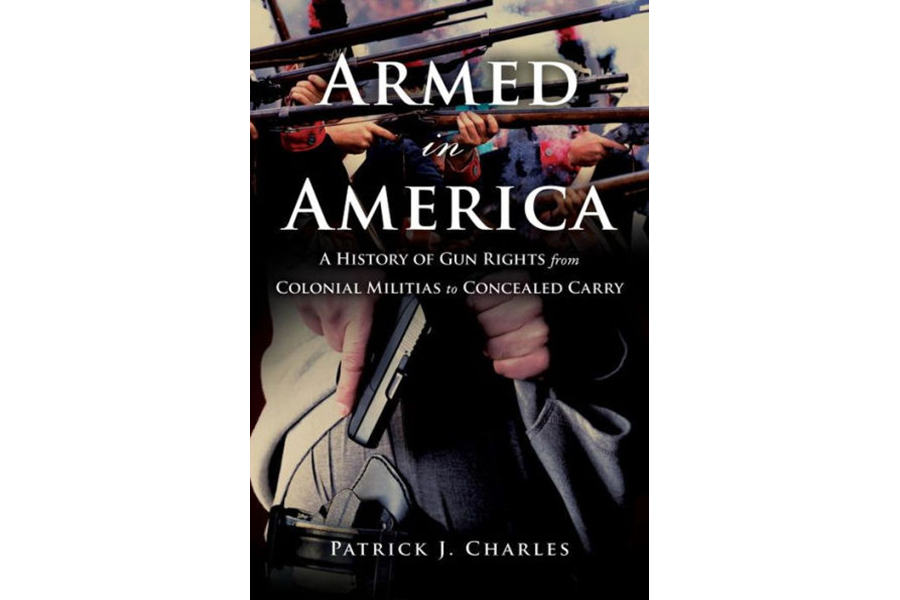'Armed in America' asks exactly what the Founding Fathers intended with the Second Amendment
Loading...
A gunman, using tricked-out rifles, murders scores of people at an outdoor concert. During the next several weeks, America again debates whether the nation’s gun laws should be tightened to better protect the public – to guard against both mass shootings and smaller incidents, where one or several people are shot.
And again, giving voice to not limiting the rights of gun owners are... America’s Founding Fathers. The Second Amendment to the United States Constitution, adopted in 1791 as part of a package known as the Bill of Rights, reads: “A well regulated Militia, being necessary to the security of a free state, the right of the people to keep and bear arms, shall not be infringed.”
Therefore, the Second Amendment provides broad gun-rights protection – even against regulations many gun owners would agree are wise. Politically powerful and vigorously vocal gun-rights groups, most notably the National Rifle Association (NRA), use Second-Amendment wording to forward this view.
Or does the Second Amendment mean something else? Was it instead meant just to enable armed militias be created from the ranks of citizens?
Patrick J. Charles doesn’t keep readers in suspense as to his interpretation. In his introduction to Armed in America: A History of Gun Rights from Colonial Militias to Concealed Carry, Mr. Charles states: “the Second Amendment was neither legally intended nor legally understood by the Founding Fathers as protecting a right to armed individual self-defense.”
So there you have it – if you buy into Charles’s detailed exegesis. Charles, a historian and legal scholar, spent almost 10 years digging deeply into the issue of gun rights. And he has written a credible record of what he learned, which led to his conclusions.
“Armed in America” painstakingly presents the historic context for the Second Amendment, which Charles says is necessary to understand its meaning. He includes a discussion of Article VII of the 1689 English Declaration of Rights, a “precursor" to the Second Amendment that “was intimately tied to Parliament’s powers over arming and arraying of the militia.”
Charles asserts, “To the Founding Fathers, a well-regulated militia indicated something far more specific... than an armed citizenry. [It] united the people in defense of their rights, liberties, and property .... as a common community.” Then he identifies the origins for what he views as misinterpretation of the Second Amendment. He says that “[i]n the 1840s, compulsory militia service gave way to volunteer militia companies...” At this point, “the right to arms was no longer seen as being indispensably intertwined with military service ... [but] gradually degenerated into a mere armed citizenry model – that is a right of law-abiding citizens to have and to keep arms.”
Beginning in the 1930s, the NRA got involved in the debate. Since then, the NRA has grown enormously in membership and political power and by the 1970s had become “almost exclusively known for its opposition to firearms controls.” Meanwhile, “[e]ven in the wake of national tragedies, gun control supporters and politicians were unable to coalesce on simple objectives.”
Today, a visit to the NRA homepage provides strongly-worded guns-rights advocacy reports and general information for gun enthusiasts. Along with vociferously advocating for Second-Amendment rights, the NRA forwards the view that America is safer when its citizens are armed; police can’t be everywhere where crime happens.
Many will want to read “Armed in America” simply because of its exceptionally important topic. But “Armed in America” is not easy reading, despite the drama suggested by its topic. It is uncompromisingly thorough to the point of being somniferous. Nonetheless, Charles succeeds in climbing the thicket of historic context to a summit of understanding about one of America’s most debated topics.
“Armed in America” could have been a better book had it been freed from overly rigorous detail. Charles, not unlike gun-rights organizations like the NRA, is so obsessed with interpreting the Second Amendment he largely ignores crucial attendant issues. He could have provided focused examinations, for example, of laws enabling ownership of semi-automatic weapons and of legal issues related to concealed carry, gun-show sales, and firearm registration.
Nonetheless, by revealing weaknesses in the argument that our Founding Fathers wanted citizens to have totally free access to guns, Charles throws the issue of gun rights and gun control back at today’s America. Elected leaders, guided by citizens and not by powerful interest groups, should feel free to decide for themselves, without intrusion from conflicting interpretations of the Second Amendment, what is best for society and for protecting our families.








